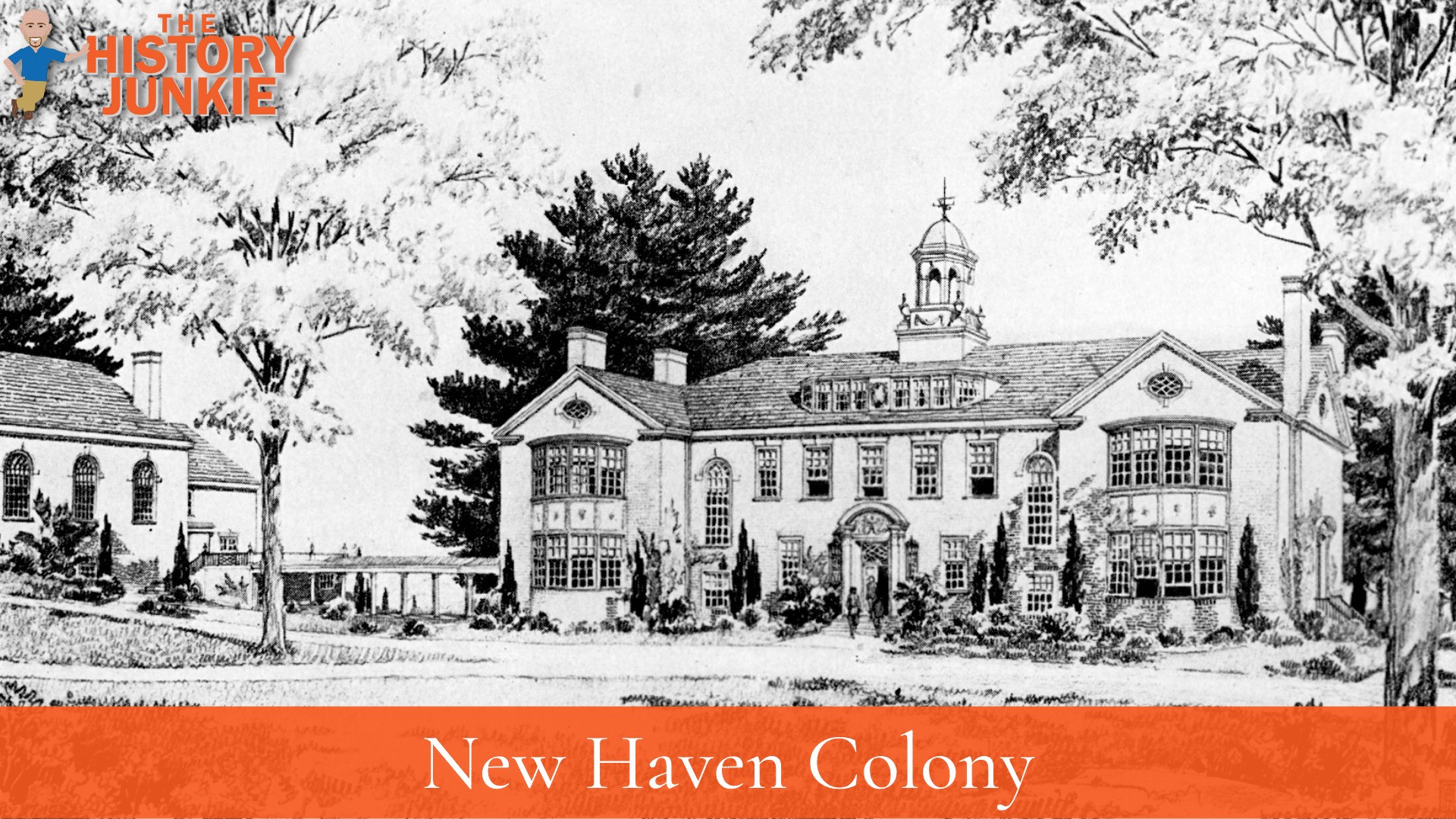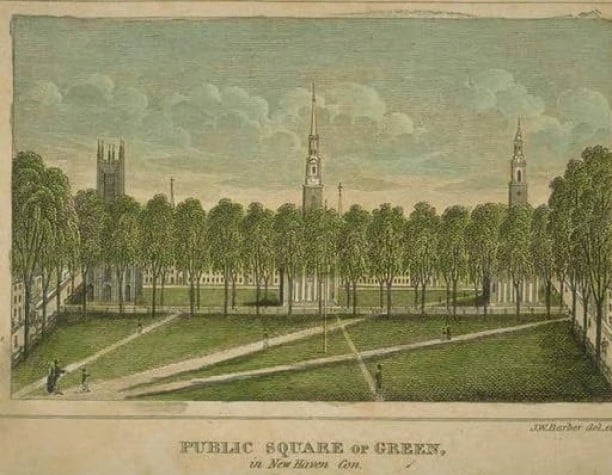The New Haven Colony was a small English colony in Connecticut that is rarely talked about in American History.

The colony existed from 1637 - 1664 but could never gain enough traction to become a large enough colony to rival Connecticut or Massachusetts Bay.
Jump to:
New Haven Colony Founding
John Davenport and Theophilus Eaton arrived in Massachusetts Bay with the intention of building a new settlement.
Davenport was a Puritan minister, and Eaton was a well-to-do merchant, and each had experience in fitting out vessels for the Massachusetts Bay Company.
The two ships that they chartered arrived in Boston on June 26, 1637. They learned about the area around the Quinnipiac River from militia engaged in the Pequot War, so Eaton set sail to view the area in late August.
The site seemed ideal for trade, with a good port lying between Boston and the Dutch city of New Amsterdam on Manhattan and good access to the furs of the Connecticut River valley settlements of Hartford and Springfield.
Eaton returned to Boston, leaving seven men to remain through the winter and make preparations for the arrival of the rest of the company.
The main body of settlers landed on April 14, 1638, numbering about 250, with the addition of some from Massachusetts.
A number of the early dwellings were caves or "cellers," partially underground and carved into hillsides.
The problems for New Haven began at the beginning. Unlike the other colonies around them, they did not have a charter. Without a charter, there is no proof that the land belongs to you.
Despite purchasing land from the local Native Americans, the settlers were designated as squatters for a period of time. This would be an ongoing struggle for New Haven.
The colonists in Connecticut had no problem using military force to expand their territory, and without a charter, there was little the colonists could do to stop them.
Creation of Government

New Haven's government was created on October 5, 1639, when the founders and colonists adopted the Fundamental Agreement. This agreement was similar to that of the Fundamental Orders of Connecticut.
According to its terms, a court composed of 16 burgesses, i.e. voting citizens, was established to appoint a magistrate and officials and to conduct the business of the plantation.
The only eligible voters were "planters" who were members of "some or other of the approved Churches of New England."
This excluded indentured servants, temporary residents, and transient persons, who were considered to have no permanent interest in the community.
They formed their government around the Bible.
Merchants attempted to build merchandising enterprises but did not see much success. However, they did have success in education.
Davenport set up a grammar school called Hopkins School with the hopes of building a college in New Haven as well.
He would not see his vision come to pass, but Yale College was opened in 1701. Yale was used in training pastors.
Formation of New Haven
The Plantation soon had neighboring settlements established by other groups of Puritans from England. Additional independent towns (called plantations) were established adjacent to New Haven Plantation.
Milford and Guilford were established in 1639, and Stamford in 1640. Southold on the North Fork of Long Island was established by settlers from New Haven in 1640.
On October 23, 1643, in the context of the formation of the New England Confederation, composed of Massachusetts Bay, Plymouth, and Connecticut Colonies, for joint military action against threats of attack by natives, the New Haven Plantation and its subsidiary settlements, Stamford and Southhold on Long Island, were combined with the independent towns of Milford and Guilford and named the New Haven Colony which then joined the Confederation.
The town of Branford was settled in 1644 by residents from Wethersfield, Connecticut Colony, who were dissatisfied with the theocratic rule there.
They joined the New Haven Colony. Eaton served as governor of the new colony until his death in 1658
Absorption By Connecticut
As mentioned earlier, the New Haven Colony did not have a charter. The same was true for Connecticut.
John Winthrop Jr. represented Connecticut and New Haven when he petitioned King Charles II for a charter. This resulted in the Charter of 1662, which the colonists in Connecticut considered an overwhelming success, but the settlers in New Haven hated the charter.
This is due to the boundaries put in place that would result in New Haven being absorbed by the Connecticut Colony.
This would create a rivalry that lasted until 1875. Connecticut would have two separate capitals, one in each city, and the state legislature would commute between both of them. This would eventually end after a new capital building was built in Hartford in 1875.
Most natives of Connecticut do not realize how close the state was to being split into two different states.
